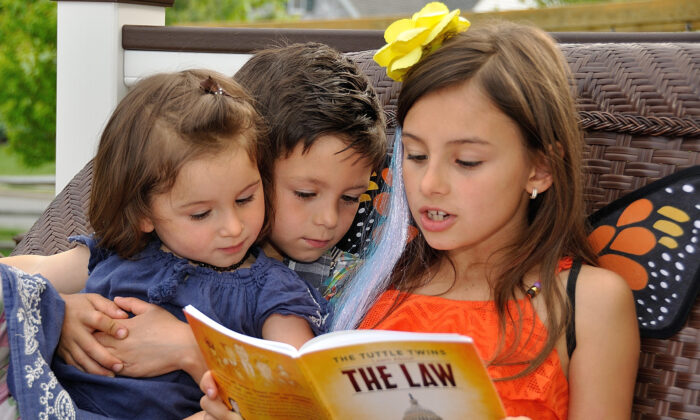|
Getting your Trinity Audio player ready...
|
Breakthrough Study: Brain Stimulation Combined with Cognitive Training Shows Promise in Treating ADHD in Children
Edited by: TJVNews.com
A breakthrough study conducted by researchers from the University of Surrey and the Hebrew University of Jerusalem suggests that a novel approach combining brain stimulation and cognitive training could significantly improve the lives of children with attention-deficit/hyperactivity disorder (ADHD), as was reported by the New York Post. ADHD is one of the most prevalent neurodevelopmental disorders affecting children worldwide, with symptoms including trouble paying attention, overactivity, and impulsive behaviors. ADHD affects up to five percent of school-age children, leading to persistent restlessness and difficulty concentrating.
The CDC estimates that 6 million children in the US ages 3 to 17 have been diagnosed with ADHD.
“ADHD is one of the most common neurodevelopmental disorders affecting children across the world,” Ornella Dakwar-Kawar, a post-doctoral researcher at the Hebrew University of Jerusalem, said in a press release, as was reported by the Post.
“Treating the condition with medication improves a child’s attention span and overall mood, however … there can be side effects including headache and a loss of appetite,” Dakwar-Kawar added. “There is, therefore, a pressing need for developing and testing novel, non-pharmacological interventions for ADHD.”
Currently, ADHD is typically treated with a combination of behavior therapy and medication, as was reported by the Post. While medication can improve a child’s attention span and overall mood, it may come with side effects such as headaches and loss of appetite. This has led to a pressing need for alternative, non-pharmacological interventions for the condition, the report said.
The clinical trial involved 23 children aged 6 to 12 who were not on medication for ADHD, as was reported by the Post. The researchers administered non-invasive brain stimulation with a mild electrical current through two electrodes, coupled with cognitive treatment involving problem-solving and reading comprehension. The Post reported that the results were promising, with 55% of the children showing significant clinical improvements in their ADHD symptoms after just two weeks, based on reports from their parents. In contrast, only 17% of children in the control group who received placebo brain stimulation experienced similar improvements.
What’s even more encouraging is that the positive effects of the treatment persisted at the three-week follow-up, with 64% of participants reporting beneficial outcomes compared to 33% in the control group, as was reported by the Post. The study also observed changes in the children’s brain electrical activity patterns three weeks after treatment.
The treatment was also deemed safe, with minimal side effects observed by the study authors.
According to Professor Roi Cohen Kadosh, head of the School of Psychology and Professor of Cognitive Neuroscience at the University of Surrey, and co-lead of the study, the results suggest that the combination of transcranial direct current stimulation (tRNS) used in the trial has the potential to transform the lives of children and their families. He emphasized the need for further testing on a larger group of children, which the team plans to initiate soon. If successful, the medical device may be approved for ADHD treatment by the US Food and Drug Administration.
“I believe that the scientific community is duty-bound to investigate and develop ever more effective and longer-lasting treatments for ADHD,” said Cohen Kadosh, as was reported by the Post.
“The findings we demonstrate in our study suggest that a combination of transcranial direct current stimulation (tRNS), which is shown to be safe with minimal side effects, has the potential to transform the lives of children and their families,” Kadosh added.
“The results from this proof-of-concept study, together with previous results we received using tRNS, increase our confidence that in the future non-invasive brain stimulation may be able to provide an alternative to medication as a treatment pathway for children,” Kadosh continued, the Post report said.
“However, our important test will be the results from a multi-center clinical trial with a larger sample that we will start soon.”
Currently, ADHD is typically treated with medication, which can improve attention and mood but may come with side effects such as headaches and loss of appetite. Therefore, the researchers emphasized the need for developing and testing novel, non-pharmacological interventions for ADHD. The study offers hope for children with ADHD and their families, providing a potential alternative to medication in the future.
However, the researchers acknowledged the need for larger multi-center clinical trials to validate the results and establish brain stimulation as a practical therapy for children with ADHD. The Post reported that Dr. Mor Nahum, co-lead of the study and head of the Computerized Neurotherapy Lab at the Hebrew University, highlighted the significance of this initial step in offering new therapeutic options for ADHD and understanding the underlying mechanisms of the disorder.
“This is an important first step in offering new therapeutic options for ADHD. Future studies, with larger and more varied samples, should help establish this as a viable therapy for ADHD, and help us understand the underlying mechanisms of the disorder,” said Dr. Nahum, according to the Post report.
Professor Itai Berger, another co-lead of the study, added that if the results are replicated in future larger studies, it could lead to a novel, promising, and safe treatment for a large number of children and their families not only in the field of ADHD but also in other neurodevelopmental disorders.
Overall, the study provides hope for a groundbreaking treatment option for children with ADHD, potentially offering a non-invasive, safe, and effective alternative to medication in the future.




